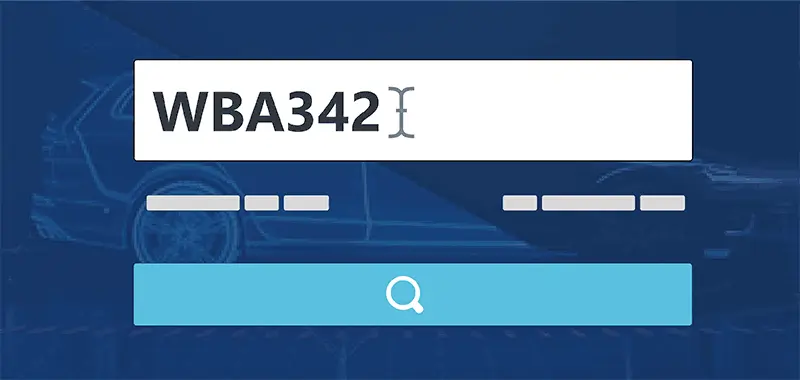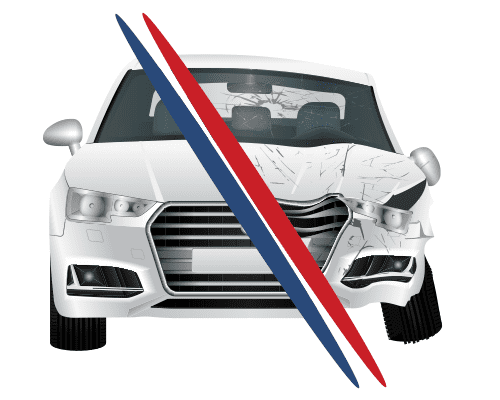What is a VIN number?
Checking the VIN number is usually something you do when buying a car still before signing the contract. You should know what it is, what it consists of, how to check it and were you can find it in the car. This information is essential for all persons person buying a new or used car.

What is a VIN?
VIN stands for Vehicle Identification Number. It is assigned to a vehicle by its manufacturer. You should know that standards may vary between countries, but all VIN numbers have a 17-character format. You should also be aware that before 1981 there was no single standard. This means that manufacturers used different VIN formats, which made it very difficult or often even impossible to check the vehicle’s history using its VIN number.
| WMI | VDS | VIS | ||||||||||||||
W |
V |
W |
Z |
Z |
Z |
6 |
R |
Z |
H |
U |
0 |
9 |
5 |
4 |
7 |
2 |
| Manufacturer’s identification | Vehicle type attributes | Checksum | Year of production | Factory code | Vehicle serial number | |||||||||||
What's in a VIN number?
The VIN number is written in 17 characters. It consists of letters and numbers. However, letters such as “O” or “I” are not used as they may be confused with the numbers “0” or “1”. Each number is unique and assigned to a given vehicle. This makes it very easy to identify later. So how do you read the VIN number? According to the current ISO standard, the VIN number consists of three parts.
WMI – these are the first three characters that describe the global symbol of the car manufacturer. Here you need to know that this code is given to the vehicle manufacturer by the competent authority in the country. But the shipment takes place according to the agreement with the ISO standardization organization or its national representative.
VDS – the second part of the VIN, it is 5 or 6 characters. Their characteristic feature is that on their basis you can get to know the technical data and characteristics of the vehicle and are coded by the manufacturers themselves.
VIS – the last part of the VIN, indicating the serial number of the car. It is usually eight characters long, counting from the end of the VIN. These are information such as: the year of production and the place of assembly of the vehicle. They are sequentially coded at positions 10 and 11. The remaining digits, in turn, define the consecutive number of the vehicle series.
In summary, WMI + VDS + VIS form the VIN chassis number, which is always 17 characters long.
Where to find a VIN number?
A VIN is most often provided on a nameplate located at the cowl top on the driver’s side, on the engine or close to the door. Another place where you may find your VIN is the driver’s side door pillar. Additionally, there is also a car label including all the manufacturer’s data, technical data and, of course, the VIN number. In passenger cars the VIN is provided on the front end of the frame or on the floor next to the passenger’s seat or wheel arch. It may also be found on the car boot floor. The easiest way to find this number is to check your registration document.
Look for the Vin number in the places indicated below:
Driver’s side pillar
Under the right front seat wiper
Under the driver’s side window
Right shock cup
Front belt in the engine compartment
In the trunk on the right side of the spare wheel
Why should you know your car’s VIN?
It is necessary and very important to know you car’s VIN. Before buying a used car be sure to check its VIN. This will tell you whether the car had not been stolen and provide the necessary information on its technical condition. Based on this, you will know whether the car was not crashed. Many merchants or dealers claim the vehicles they sell are accident-free. Unfortunately, many unexperienced drivers take it on faith, and then it turns out that the car is in a terrible condition and requires a thorough overhaul. By checking the VIN number, you may thoroughly verify the vehicle’s history and origin. It happens cars that had been involved in serious collisions have their VIN numbers forged. So if you notice any discrepancies, just cancel the purchase right away. A good choice is also a VIN report, which includes really detailed information. This will tell you what the actual mileage is, if there any hidden defects and how the car was serviced and repaired. Moreover, you will also learn the car’s previous designation – whether it was used for private or commercial purposes e.g. as a taxi. If your car was damaged or broke down, the VIN number will allow you to import car parts that are difficult to come by. This ensures that the components purchased will be a perfect fit. Garages often order car parts by giving a VIN number.
What you need to know about the model year code?
Each manufacturer uses their own labeling system, but the place of the code within the VIN number is fixed. What is important is the model year code. Depending on the manufacturer, it may denote the production date, marketing year or vehicle brand type. In this case the year 1980 is coded as “A”. The following years are marked with subsequent letters of the alphabet and the year 2000 is denoted by the letter “Y”. Digits from 1 to 9 were used between 2001 and 2009. After 2009, the alphabetic coding was used again, and so the year 2009 is “A” and 2021 – “M”. According to the ISO standard, the letters Q, U and Z are not used. This means that the letter code for 2000 is “Y”, while for 2001 it is already “1” and not “Z”.
What is a VIN decoder?
A VIN decoder is a very popular online application that relies on an algorithm. It will allow you to decode the information included in the vehicle VIN number. Decoders may of course provide a different amount of information, depending on the complexity of the algorithm. Most often they provide a vehicle history report. It is available online or as a PDF.

How to check whether a used car had its paint color changed?
It is difficult to decode the paint color form the VIN number. An authorized service station may help here, as the color name or code provided on the nameplate is the factory-painted color. This way you may learn if the body color is the same as the initial color used by the car’s manufacturer.
Undoubtedly, the VIN number is not important to know but it’s a must-know! It will allow you to learn the entire vehicle history and give you the peace of mind that comes with not having to worry whether you have been deceived by an dishonest car dealer who sells allegedly accident-free cars. Depending on the manufacturer, the VIN number may be located on different vehicleparts, and there is no single placement standard for each car. Remember that in the case of a collision or if some parts are simply worn, you may import them using the VIN.
